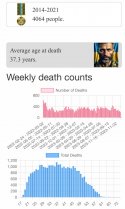The M1 Abrams tank supplied to Ukraine must be cleaned every 12 hours or its engine will break down.
The 31 M1A1 Abrams tanks supplied by the United States to Ukraine, although it is considered the strongest tank in the world, there are some problems. One of them is cleaning the engine filter. The M1 Abrams is considered one of the most powerful tanks in the world, but its 1,500 horsepower gas turbine engine, which uses jet fuel, has poor fuel efficiency. Abrams has a mileage of 243 meters per liter. This is about half the length of Germany's Leopard 2, which is 458 meters per liter. Even at a standstill, with the engine running, it consumes 50 liters per hour. Another challenge is the complicated maintenance of this engine. Mark Hartling, a retired US Army lieutenant general and former commander of the 1st Armored Division, said in an interview with the Kyiv Independent, a Ukrainian media outlet: “If you compare the Abrams to other Western tanks, it's not about the crew; This is an extremely difficult task for those who support them."
The M1 Abrams is powered by a single integrated propulsion unit called the Full-Up Power Pack (FUPP), which combines a Honeywell AGT 1500 gas turbine engine with an Allison X 1100-3 B transmission powerful and delicate jet, it requires regular cleaning to avoid contamination and damage from dust and impurities, and the air filter must be cleaned every 12 hours. This means it needs to be cleaned twice a day. Failure to clean your engine filter every 12 hours can cause serious damage to your million-dollar engine, requiring disassembly of the engine and even disassembly of the gearbox. There is also the possibility that you will have to make long-term repairs. term. Depending on the nature of the damage, it may not be possible to repair it on site and, in the worst case, it may be necessary to replace the engine.
Such advanced repairs cannot be carried out in Ukraine and would have to be transported to neighboring Poland, where the M1 Abrams is operated by NATO forces, resulting in the long-term loss of a valuable force of just 31 vehicles. These problems apply not only to engines, but also to many other advanced components and electronics that fail, from thermal cameras to ballistic computers and many others. These faults cannot be resolved by a crew of four.
“Without support infrastructures, such as mechanics, repair shops, parts supply systems, ammunition and fuel supply, and communications lines, a tank would not have combat capability and the high cost of 5 million dollars each tank would be lost,” said Mark Hartling.

